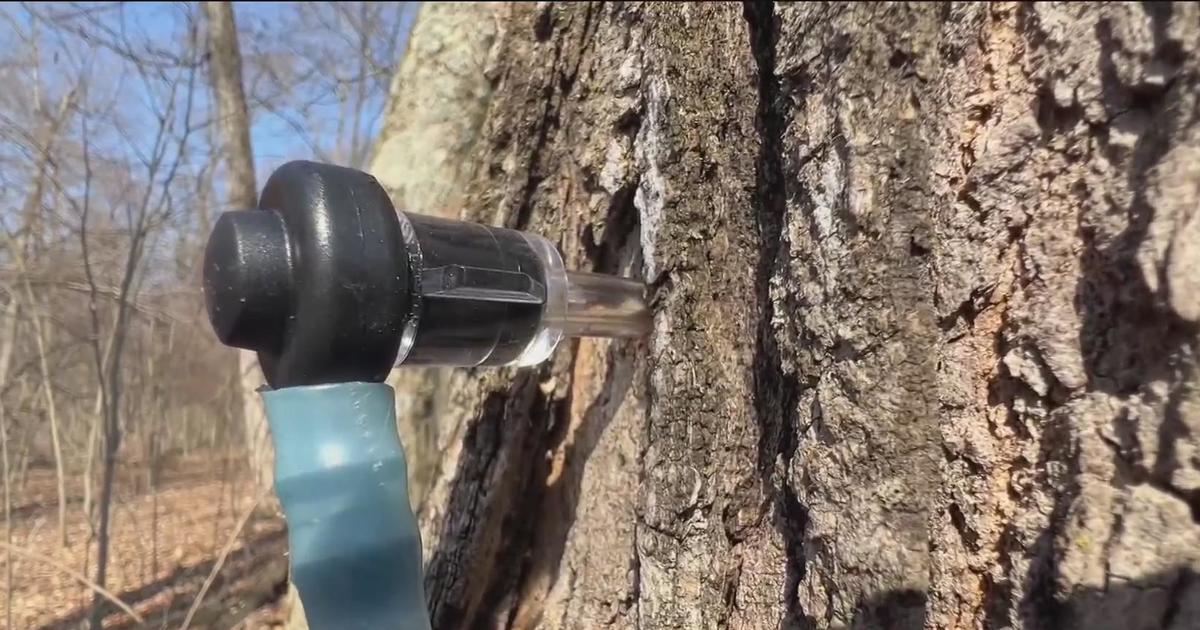What's Going On Under the Ice? A Cabled Observatory Gives Michigan Tech Researchers a Peek
HOUGHTON (WWJ) -- Guy Meadows loves winter. It gives the director of Michigan Technological University's Great Lakes Research Center in the cold, snowy Upper Peninsula a chance to do something few others can: study the Great Lakes under a cover of ice.
"Our arctic-like environment provides a wonderful opportunity to make the GLRC a true year-round research facility," Meadows said.
This winter, for example, the GLRC built and deployed a cabled observatory under the ice off the research center's dock, on the Portage Waterway, which runs between Houghton and Hancock in the Keweenaw Peninsula. Since it connects two parts of Lake Superior, it technically makes the northern Keweenaw a big island.
"If you depend on battery-operated buoys to collect data, you're blind for six months out of the year in Lake Superior," Meadows explains. "Cabled observatories give us an underwater interface that can be used year-round. And the armored cables can be run miles off shore."
The cabled observatory is a collection of instruments including an acoustic doppler current profiler; a probe that measures nine water quality parameters such as temperature, dissolved oxygen, pH and water cloudiness; and a live, lighted color videocam. The instruments are connected to shore by an underwater cable that feeds power to the equipment and transmits data back to the scientists for analysis.
The observatory is mounted on the bottom of the waterway, 17 feet below the surface. It's built from repurposed instruments already on hand at the GLRC. In addition, the mast from one of the research center's summer buoys has been mounted on the GLRC roof to collect winter weather data.
Meadows says the most striking thing he's learned so far is how much light makes it down 17 feet below the ice-covered surface and through several feet of snow. "That's important, because light drives the engine of the Great Lakes," Meadows said.
Meadows and his team built the cabled observatory off the GLRC dock as a proof of concept, because he has a much bigger observatory project in mind.
The scientist's expertise in deep water data analysis led Canada to tap him as a reviewer and later as chair of a panel that reviewed a Canadian deep ocean observatory with a cable that is many hundreds of miles long and 8,500 feet below the surface of the Pacific Ocean near Victoria, British Columbia. That experience made him the logical choice to lead the U.S. side of a huge, binational project to build large cabled underwater observatories in each of the Great Lakes.
Meadows' group has applied for $13 million from the National Oceanic and Atmospheric Administration, while the Canadians have applied for $18 million from the Canadian Foundation for Innovation. They hope to hear shortly about the grants. If the project proceeds, the GLRC would run the observatories in American waters. The University of Windsor would run the ones on the Canadian side.
Why spend more than $30 million building observatories under the Great Lakes?
"It will help us better understand the processes that are going on deep under the ice," Meadows said. "We know a lot about the biology, chemistry and physics of the lakes in summer and fall, but when the ice breaks up in spring, things have changed dramatically. This will help us know what went on over the winter, to complete that circle of knowledge."
The GLRC's under-ice observatory is collecting data for scientists to analyze, but the public is welcome to watch as well. There are links on the GLRC website to GLRC webcams and the live video from below the surface. Initially, the researchers jokingly called the underwater video camera a "fishcam." But they soon discovered that there aren't many fish moving around under the Portage Waterway ice in winter.
And the GLRC observatory is not the only one watching conditions under the ice near Michigan Tech.
At the nearby South Entry to the waterway, a second under-ice observatory is transmitting data from 20 feet below the surface, measuring currents, ice movement, ice thickness and the impact of ice on the nearby historic lighthouse. University of Michigan researcher Tony England -- in collaboration with the GLRC -- is running this US Department of Energy- funded research project.



